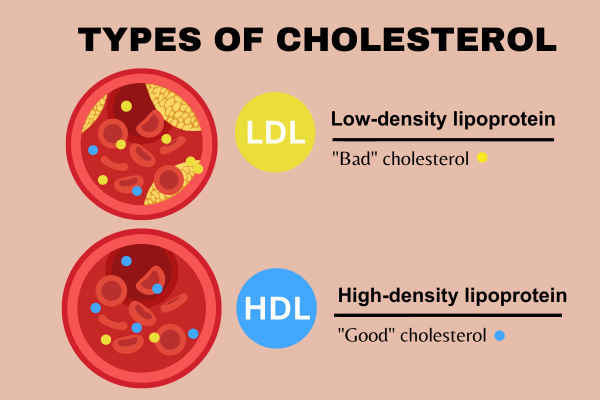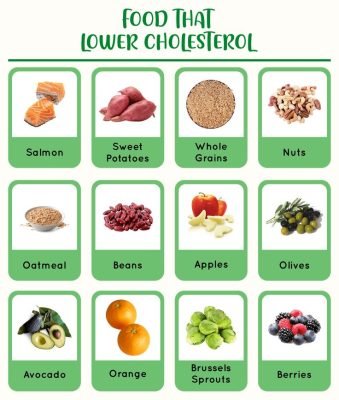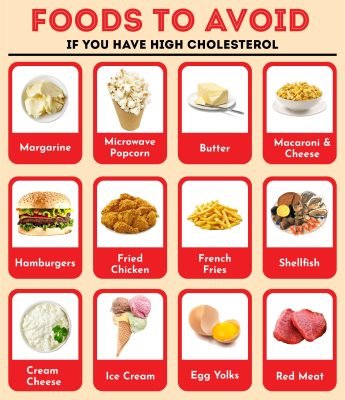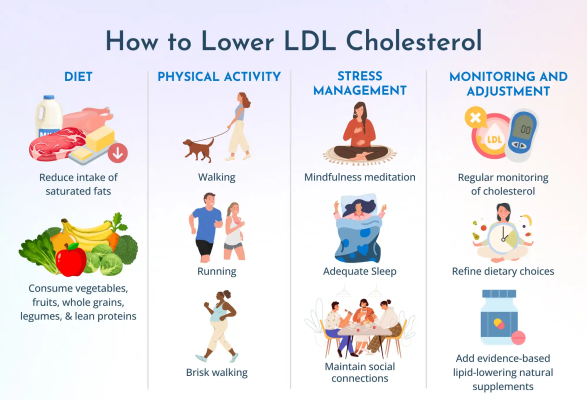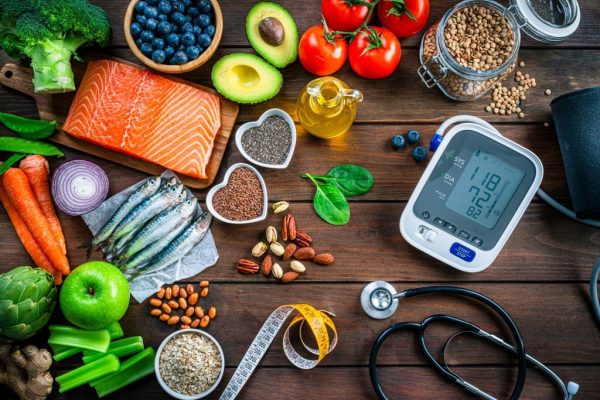Best Foods to Lower Cholesterol Naturally
Maintaining healthy cholesterol levels is essential for heart health. Elevated LDL (bad) cholesterol increases the risk of cardiovascular problems, including heart disease and stroke. Fortunately, the foods you eat can significantly impact your cholesterol levels. In this article, we’ll explore the best foods to lower cholesterol and how to incorporate them into your diet. Whether you want to follow a low cholesterol diet or are looking for cholesterol-friendly snacks, making informed food choices is key to managing cholesterol naturally.
What is Cholesterol?
Cholesterol is a fatty substance produced by the liver that is essential for building cells and producing certain hormones. However, having high levels of cholesterol in your blood, particularly LDL cholesterol, can lead to plaque buildup in the arteries, increasing the risk of heart disease.
There are two main types of cholesterol:
- LDL (Low-Density Lipoprotein): Known as “bad” cholesterol, high levels of LDL can cause arterial blockages.
- HDL (High-Density Lipoprotein): Known as “good” cholesterol, HDL helps remove LDL from the bloodstream.
How Diet Impacts Cholesterol
Your diet plays a key role in determining cholesterol levels. Foods rich in saturated fats and trans fats tend to raise LDL cholesterol, while certain foods can actively help lower LDL and improve heart health. Incorporating cholesterol-reducing foods into your daily meals can help you lower cholesterol naturally without drugs.
Top 10 Best Foods to Lower Cholesterol
Here are the top foods you should consider adding to your diet to help manage cholesterol levels naturally.
1. Oats
Oats are one of the most effective foods for lowering LDL cholesterol due to their high content of soluble fiber. Soluble fiber binds to cholesterol in the digestive system, preventing it from being absorbed into the bloodstream. A bowl of oatmeal for breakfast provides about 1-2 grams of soluble fiber, and adding fruits like bananas or berries can increase the fiber content even more.
How to incorporate: Have oatmeal or oat-based cereals for breakfast, or use oats as a base for smoothies or baking.
2. Barley and Other Whole Grains
Like oats, barley and other whole grains are high in soluble fiber, which helps to lower LDL cholesterol. Regular consumption of whole grains means a reduced risk of heart disease due to their cholesterol-lowering properties.
How to incorporate: Swap white rice for barley, or choose whole-grain breads and pastas. Barley can also be added to soups and stews for a heart-healthy meal.
3. Beans and Legumes
Beans and legumes such as lentils, chickpeas, and black beans are excellent sources of fiber and plant-based protein. Their high soluble fiber content helps to lower LDL cholesterol, making them a great addition to any cholesterol-lowering diet. Additionally, they help keep you feeling full, which can aid in weight management.
How to incorporate: Add beans to salads, soups or stews. You can also use them as a substitute for meat in vegetarian dishes.
4. Nuts (Almonds, Walnuts, etc.)
Nuts, especially almonds and walnuts, are rich in unsaturated fats, which help lower LDL cholesterol and improve HDL cholesterol. Walnuts are particularly beneficial as they are high in omega-3 fatty acids, which also support heart health by lowering triglycerides.
How to incorporate: Enjoy a handful of raw, unsalted nuts as a snack, or sprinkle them on top of salads and yogurt. You can also blend them into smoothies for a heart-healthy boost.
5. Fatty Fish (Salmon, Mackerel, etc.)
Fatty fish like salmon, mackerel and sardines are rich in omega-3 fatty acids, which can lower triglycerides, reduce inflammation, and improve overall heart health. Regular consumption of fatty fish has been shown to reduce LDL cholesterol and raise HDL cholesterol levels.
How to incorporate: Aim to eat fatty fish at least twice a week. Grilling or baking fish with olive oil and herbs is a great way to incorporate it into your diet.
6. Avocados
Avocados are packed with monounsaturated fats, which are known to reduce LDL cholesterol while increasing HDL cholesterol. They are also a good source of fiber, further helping to lower cholesterol levels.
How to incorporate: Add sliced avocado to salads, sandwiches, or enjoy it as a topping on toast. You can also use mashed avocado as a healthy alternative to butter or mayonnaise.
7. Olive Oil
Olive oil is a cornerstone of the Mediterranean diet and is rich in monounsaturated fats and antioxidants. Studies show that replacing saturated fats like butter with olive oil can help lower LDL cholesterol and improve heart health.
How to incorporate: Use olive oil as a base for salad dressings, drizzle it over vegetables, or use it for sautéing foods instead of butter or margarine.
8. Fruits (Apples, Berries, Citrus)
Fruits, especially those high in pectin such as apples, strawberries and citrus fruits, can help lower cholesterol. Pectin is a type of soluble fiber that binds to cholesterol in the gut and prevents it from being absorbed into the bloodstream.
How to incorporate: Snack on fresh fruits throughout the day, add them to oatmeal, or blend them into smoothies for a cholesterol-lowering boost.
9. Vegetables (Leafy Greens, Carrots, etc.)
Vegetables, especially leafy greens like spinach, kale and broccoli, contain fiber and nutrients that support heart health. Their low calorie content also makes them ideal for weight management, which is important for lowering cholesterol levels.
How to incorporate: Eat a variety of vegetables at each meal. Leafy greens can be added to smoothies, salads, or sautéed as a side dish, while root vegetables like carrots can be roasted for a heart-healthy snack.
10. Soy Products
Soy-based foods such as tofu, soy milk and edamame contain compounds that have been shown to lower cholesterol. Substituting soy for higher-fat animal products can help lower LDL cholesterol while providing high-quality protein.
How to incorporate: Replace dairy milk with soy milk, or use tofu as a meat alternative in stir-fries, salads, or soups.
Foods to Avoid with High Cholesterol
While adding cholesterol-lowering foods to your diet is important, you should also be mindful of what foods to avoid. What foods contain bad cholesterol? Foods high in saturated fats and trans fats are the main culprits. These include:
- Processed foods: Such as baked goods and fried foods, which are often made with unhealthy trans fats.
- High-fat meats: Like bacon, sausage, and fatty cuts of beef or pork, which are high in saturated fats.
- Full-fat dairy products: Such as butter, cream, and cheese, which can raise LDL cholesterol.
Avoiding these foods while focusing on cholesterol-reducing foods can help you maintain a low cholesterol diet and support heart health.
How Much Cholesterol-Lowering Foods Should You Eat?
To effectively lower cholesterol, it’s important to know how much of these cholesterol-friendly foods to eat. Here are some recommendations:



Following these guidelines as part of a cholesterol-lowering diet can have significant benefits for heart health.
Can Diet Alone Lower Cholesterol?
For many people, making dietary changes is an effective way to lower cholesterol naturally. However, in some cases, medication may still be required to achieve optimal cholesterol levels. If you’re interested in learning more about pharmaceutical options for managing high cholesterol, check out our article on the Best Drugs for High Cholesterol.
Other Lifestyle Tips to Lower Cholesterol
In addition to eating foods that decrease cholesterol, lifestyle changes can play a big role in managing cholesterol levels:
- Exercise regularly: Physical activity helps raise HDL cholesterol while lowering LDL cholesterol.
- Quit smoking: Smoking reduces HDL cholesterol and damages the arteries.
- Maintain a healthy weight: Losing excess weight can help lower LDL cholesterol and improve heart health.
Combining a cholesterol-friendly diet with these lifestyle changes can help you achieve the best results.
FAQs
1. Are prawns high in cholesterol?
Yes, prawns are relatively high in cholesterol, but they are also low in saturated fat. In moderation, they can still be part of a healthy diet.
2. Do eggs have cholesterol?
Yes, eggs contain cholesterol, but they don’t significantly impact blood cholesterol in most people.
3. Does fish oil reduce cholesterol?
Fish oil helps lower triglycerides and supports heart health, but it doesn’t have a major effect on lowering LDL cholesterol.
4. What foods are high in cholesterol?
Foods high in cholesterol include red meat, full-fat dairy products, butter, and shellfish.
5. Does alcohol increase cholesterol?
Excessive alcohol consumption can raise triglycerides and increase the risk of heart disease, while moderate consumption may have some benefits.
6. Is coconut milk bad for cholesterol?
Coconut milk contains saturated fats that can raise LDL cholesterol, so it should be consumed in moderation.
7. Is cheese bad for cholesterol?
Certain types of cheese are high in saturated fat, which can raise cholesterol levels. Opt for low-fat cheese or consume it in moderation.
Incorporating foods lowering cholesterol such as oats, nuts, fatty fish, and leafy greens into your diet can significantly reduce LDL cholesterol and improve heart health. To see the best results, pair a low cholesterol diet plan with regular physical activity and other healthy lifestyle habits.
Looking for more ways to manage cholesterol? Visit AjantaStore to explore our wide range of cholesterol management treatments and products designed to support heart health naturally.


